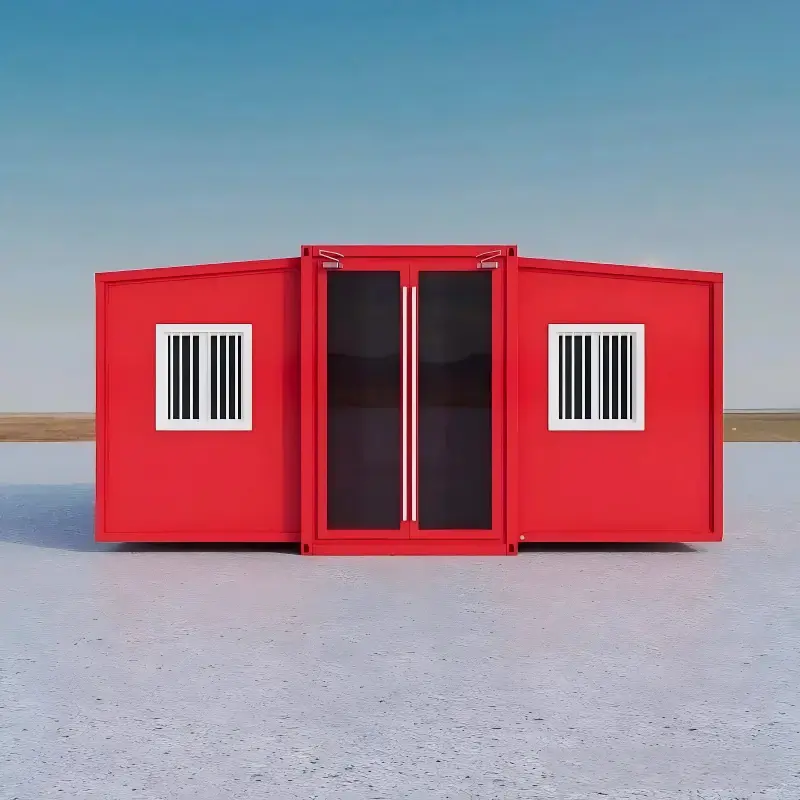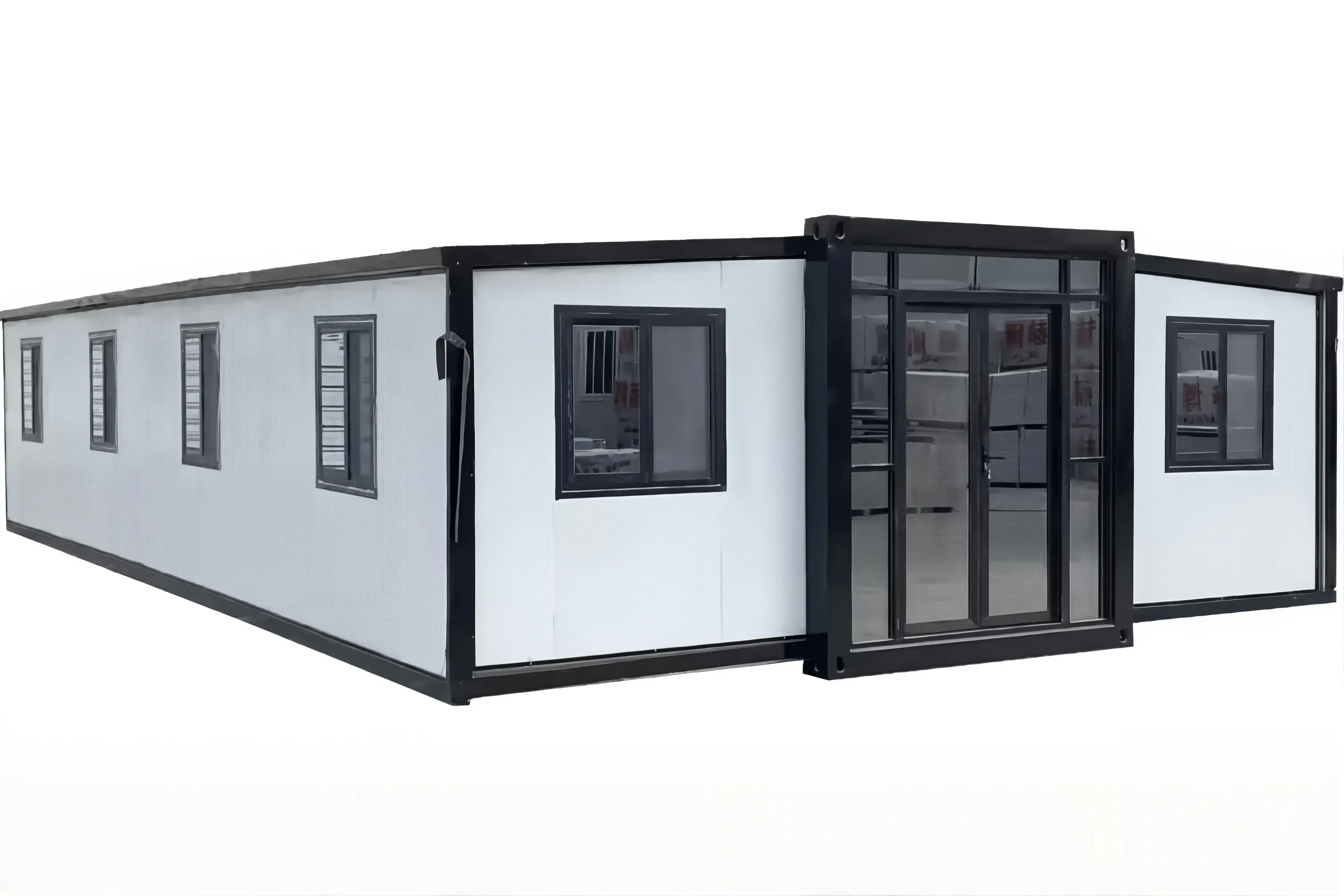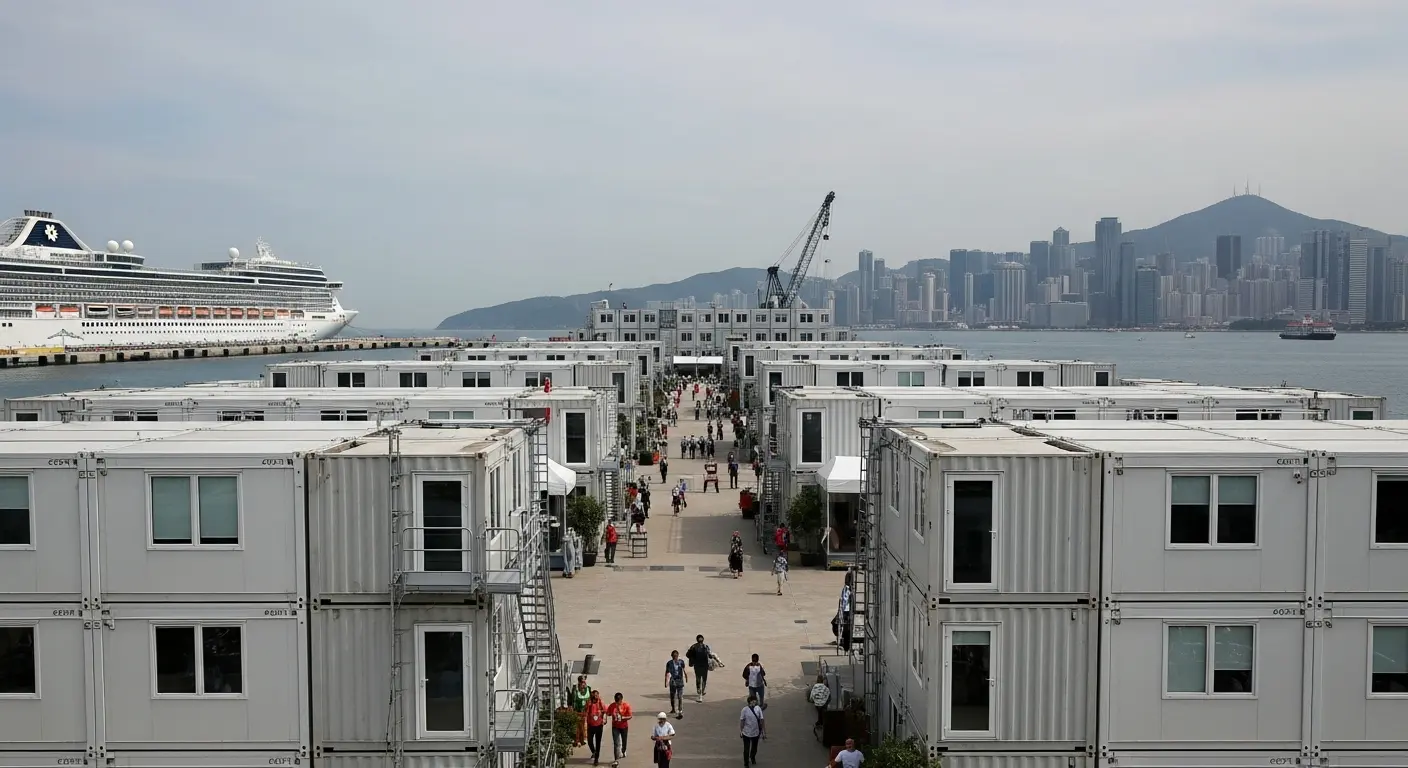Container homes are moderately gaining significance
The global Container Homes market size was valued at USD 61.83 billion in 2023. The market is projected to grow from USD 64.75 billion in 2024 to USD 108.70 billion by 2032, exhibiting a CAGR of 6.7% during the forecast period. The container homes market in the U.S. is projected to grow significantly, reaching an estimated value of USD 42.67 Bn by 2032, driven by the demand of innovative architectural design across U.S. North America dominated the global market with a share of 37.33% in 2023.
Container homes, built from repurposed shipping containers, are gaining momentum as affordable, eco-friendly, and modular housing alternatives. Their growing appeal lies in rapid construction, lower material costs, and flexible architectural possibilities, particularly for residential use and temporary housing in urban and rural areas.

Market Size & Growth:
2023 Market Value: USD 61.83 billion
2024 Market Value: USD 64.75 billion
2032 Forecast Value: USD 108.70 billion
CAGR (2024–2032): 6.7%
Top Region: North America – 37.33% market share in 2023
Top Country: U.S. – estimated to reach USD 42.67 billion by 2032
Top Architecture: Tiny House – driven by affordability and mobility
Top End-user: Residential – driven by rising demand for cost-effective living and vacation rentals
Market Challenges:
Corrosion & Climate Impact: Lifespan depends heavily on maintenance and local environmental conditions, especially in coastal zones
Regulatory Hurdles: Building permits and zoning restrictions, particularly in the U.S., can slow project approvals
Durability Concerns: Typical lifespan of 10–25 years may deter long-term buyers compared to traditional housing
Limited Awareness in Emerging Markets: Underutilization of container housing potential in parts of MEA and Latin America
Market Opportunities:
Affordable Housing Crisis: High urban housing costs globally boost interest in budget-friendly container homes
Commercial & Industrial Adoption: Use of modular container units in offices, nursing stations, pop-up stores, and emergency housing
Rise of Smart Prefab Homes: Integration of solar panels, insulation, and modular smart systems appeals to tech-savvy buyers
Growth in Asia Pacific: Easy access to used containers and urban population growth drive rapid adoption across China, India, and Southeast Asia
Remote Work & Leisure Travel: Demand for flexible vacation cabins, backyard offices, and countryside retreats opens new residential use cases
CONTAINER HOMES MARKET TRENDS
Growing Demand for Innovative Architectural Design to Bolster the Market Growth
Container homes are gaining traction as a new form of sustainable living. About 14 million unused containers in the world are currently being explored in creative ways to make homes for many. The pandemic has pushed people to take more interest in DIY (do-it-yourself) developments in designing, decorating, and home building.
Several architectural design possibilities are being explored for the interior of these homes. These include walls made from glass, wooden accents, splashes of greenery, getaway cabins, spiral staircase, shipping container guesthouse, and others. These sustainable designs add a greater sense of open space and style. Further, they also aid in reducing electricity bills and other house-related expenses, accelerating the market growth.

CONTAINER HOMES MARKET GROWTH FACTORS
Sustainability & Cost-effectiveness Container Homes Strengthen the Market Growth
The ecology of container homes has a great impact on the market in many ways. First, consumer awareness of the environment is growing. People are increasingly looking for sustainable and eco-friendly housing options and container homes are paving the way to meet their preferences.
The use of recycled materials also contributes to cost efficiency, making container homes an attractive option for those looking for an affordable and environmentally friendly living solution. The container home market continues to grow as sustainability becomes a key decision-making factor. In addition, the modular nature of container homes allows for energy efficient designs with features such as good insulation, natural ventilation, and solar panels. This increases its overall appeal, especially for those looking to reduce their carbon footprint.
The cost efficiency of container homes is a major factor contributing to their popularity and impact on the housing market. Container homes offer a cost-effective alternative to traditional construction methods and this affordability has several implications for the market.
Container homes are often more budget-friendly than traditional homes, which makes them an attractive option for individuals or families looking for affordable housing solutions. This is particularly appealing in regions where housing costs are high and people are seeking more cost-effective alternatives.
The eco-friendliness and cost-effectiveness of container homes has played an important role in shaping the market, influencing purchasing decisions. As environmental concerns continue to grow, the demand for sustainable housing options such as container homes will continue to expand.

The End
Based on end-user, the market is divided into residential, commercial, and industrial.
Residential container home rentals are becoming increasingly popular for various leisure activities. Some prefer guests to stay together under one roof. People rent them out to host get-togethers, camps, and outdoor parties. These houses are also suitable as vacation homes and cabins at sea, with basic amenities such as beds, bathroom facilities, and kitchens.
The commercial and industrial segments are set to record substantial demand during the forecast period. In these sectors, container homes are moderately gaining significance. These homes are being used for recreational & emergency or nursing, proving to be cost-effective and space effective.
Case One: Renovated Container Houses for Rent in Singapore's One-north Community

It’s up to S$200 a night for a stay at this shipping-container-turned-hotel
When he had the idea to build and design hotel rooms housed in shipping containers, Mr Seah Liang Chiang envisioned them to be on a remote beach, park or island.
“l want to give Singaporeans the opportunity to live right on the beach. When you wake up,want you to hear the lapping of waves coming in just 5m away," the 55-year-old Malaysian,who is married with one daughter, said.
His dream may not be too far out, because on Friday (Jan 17), Singapore's first-ever pair of shipping-Container Hotel rooms were launched at a place not many people would expect them to be.
They are located at industrial landlord JTC Corporation's startup cluster, Launchpad@One-north near Buona Vista. And the long-term plan is to move them closer to the beaches in future.
From Saturday onwards, the public may book a night at one of these 300-sqf cabins slightly smaller than the space of two car-park lots - for between S$150 and S$200 via the Shipping-Container Hotel's website or on Airbnb.

Mr Seah, owner and founder of Shipping-Container Hotel, said that one container costs S$100,000 to repurpose and fix up.
There is no room service or daily housekeeping, and guests will be given a 24-hour contact number to call should they need anything. The containers will be cleaned up by Mr Seah himself after each stay.
The entrepreneur said that the cabins are a unique alternative to booking a hotel for business travellers in the area, and for nearby office employees working late at night to rest.
“There's a demand for accommodation here, because you cannot sleep in your office at JTC Launchpad overnight. lt's a JTC ruling," he said.


















